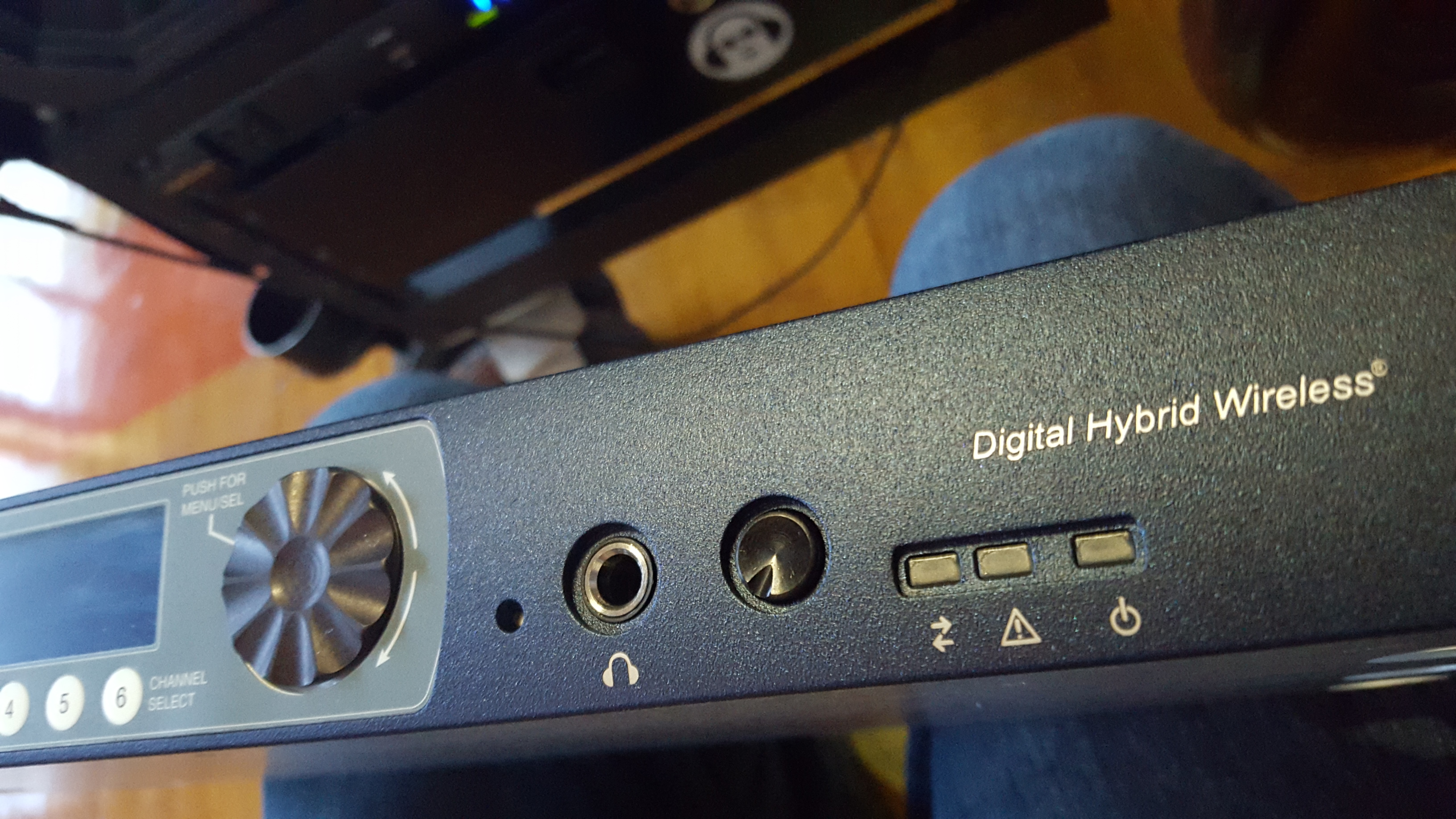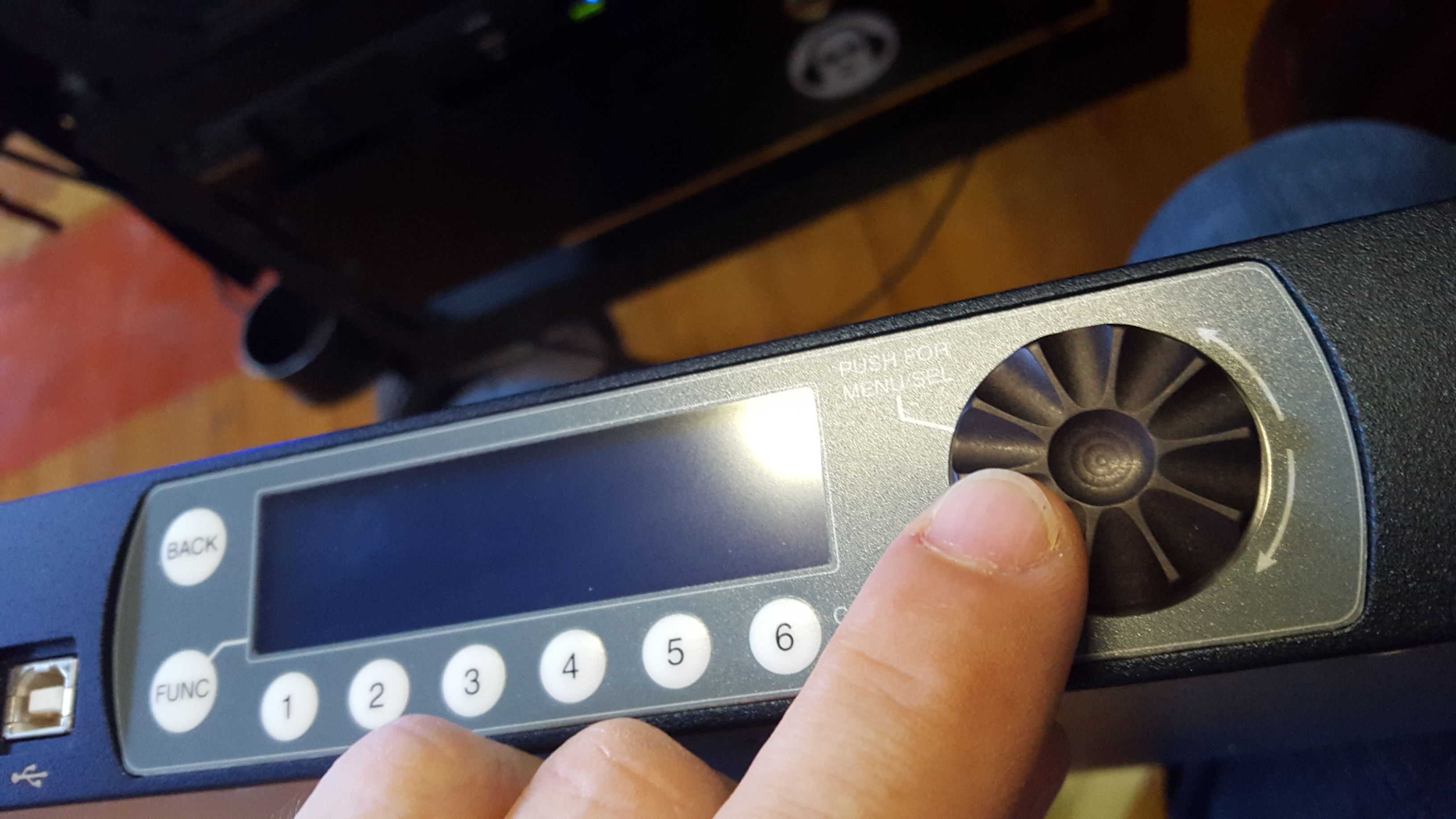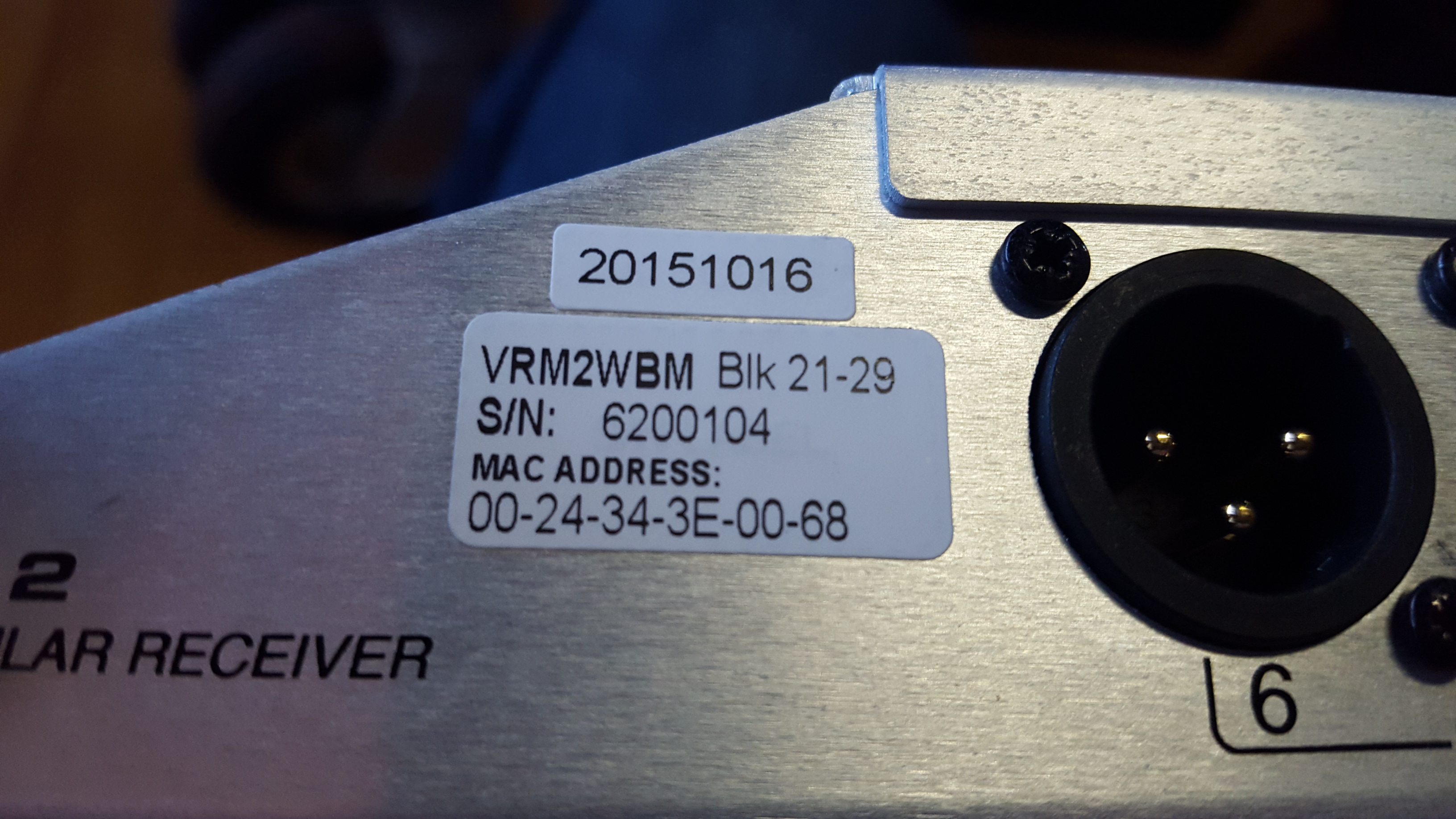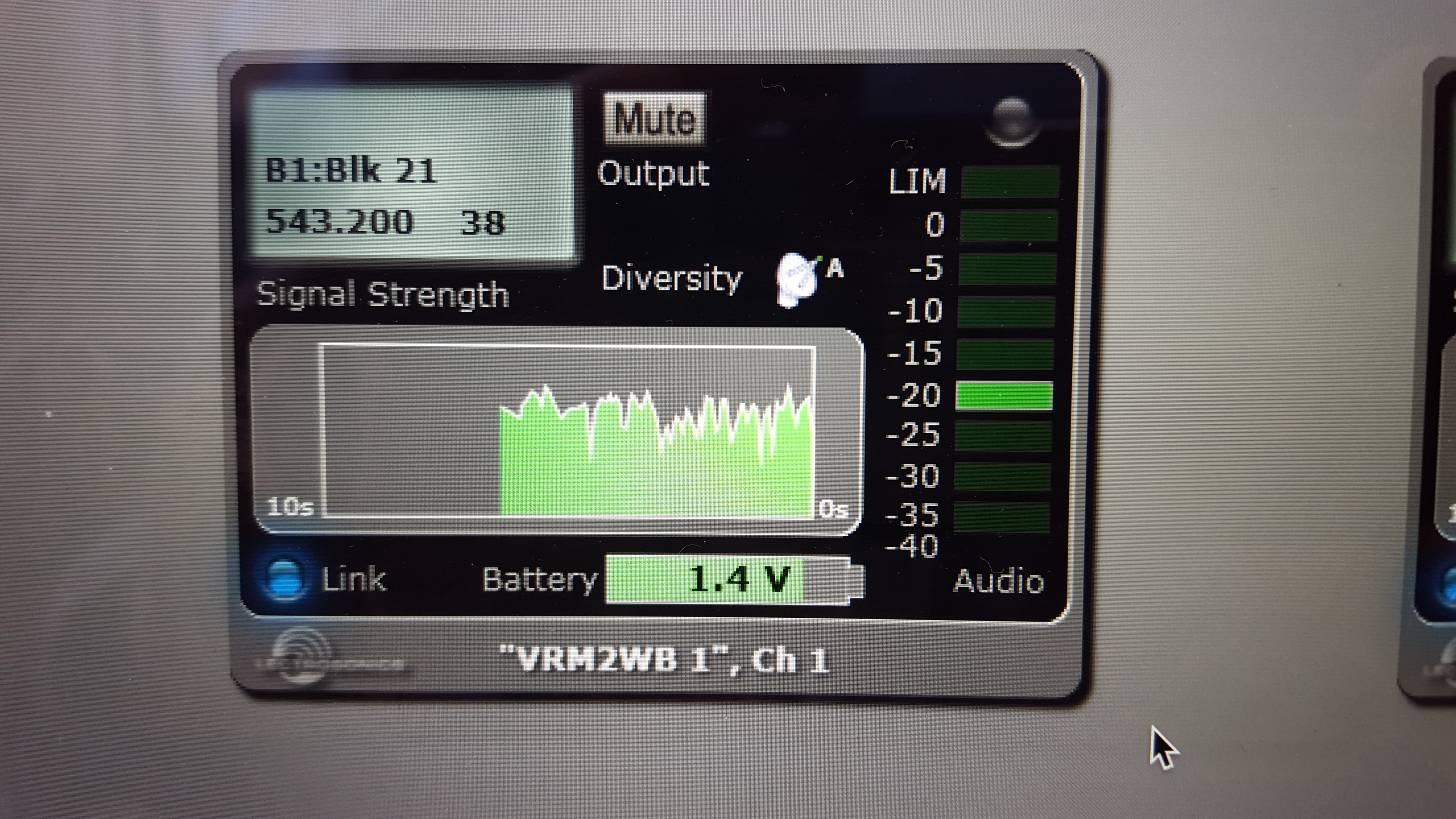
I’ve recently had the pleasure of using the new Lectrosonics Venue 2. It’s such a huge improvement over the original Venue; something our industry already considers the proven modular workhorse. With new features such as wide-band blocks, IQ filtering, lowered noise floor, Wireless Designer with built-in frequency coordination and—one of my favorite features—menu-driven antenna power toggling, you can be sure to see the Venue 2 on sound mixer’s carts all over the world soon enough!
What the new and old Venues have in common:
The Venue and Venue 2 share many core similarities. Each can handle six wireless modules which can be installed without tools. Both have a built-in RF multi-coupler with loop-thru output to gang multiple units together through a common pair of antennas. Phantom power is available to run remote powered antennas. They are also both available in Wideband Low (470 – 691 MHz) and Wideband Mid (537 – 768 MHz). For the most part, every feature from the Venue has been carried over and/or improved in the new Venue 2.
- Front Face
The front face on the new V2 is a flush surface with membrane buttons, a welcome change. It also sports a new non-glare flush-mount LCD that has brightness options and can display more information. The selector dial is now a larger wheel. New additions to the face include: Alert indicators, an IR port (for programming newer style transmitters), a USB connectivity port and a recessed reset switch. The headphone knob is now a push to open/close knob. Also of note: There are two rubber caps on either side of the face that allow BNCs to be rerouted from the back to the front of the venue.
- Rear Panel
The V2 rear panel has all of the same elements of the original V1 with a singular and powerful addition: the ethernet port. The BNC ports have been rearranged into an over/under rather the the V1’s side by side layout.
- Top
Existing V1 users will be at home with the design of the V2. Modules are loaded in the same way and locked into place with clips, just like the V1.
- VRT vs VRT2 – Wideband
The new VRT2s are now wide band. They allow tuning between three consecutive blocks with 3072 tunable frequencies in each module called Bands. A1, covering blocks 470, 19 and 20 (470.100 – 537.575 MHz), B1, covering blocks 21, 22 and 23, (537.600 – 614.375 MHz), C1, covering blocks 24, 25 and 26 (614.400 – 691.175 MHz). Please note: older VRTs and VRSs are not compatible with the new V2.
- IQ Filtering
“Basically, IQ filter means Intelligent Q. The filter dynamically adjusts according to received signal strength. Let’s say you are in a hi RF environment . With Venue, you would run a risk of front end overload setting your transmitters to 250 mW at close range. IQ filtering sharpens the Q of the filter and lowers sensitivity if the signal is strong. This reduces interference and allows tighter spacing. If the talent walks away, the sensitivity increases and the Q is lowered to capture more RF. Impossible to overload and automatically adaptive. At its lowest Q it’s like a VRT. At its highest Q, it’s like a 411 on steroids. Additionally, the tracking changes with the frequency – more resolution – LOTS MORE” – Gordon Moore, President of Lectrosonics
- Phase Switching & Noise Floor Reduction
“Considerable time was spent in engineering on the diversity circuit and algorithms for the Venue 2. First, how often the phase switching takes place was reduced. In the older systems, this switching is more aggressive, meaning that even with fairly strong signals, the phase of the 2nd antenna can still tend to switch. With the Venue 2, this switching is minimized to when it is absolutely needed, i.e. the signal drops by a lot and/or the noise is increasing. Because of this, there are fewer corrections needed to keep this switching out of the audio.
Then, a significant amount of tuning by ear was done to the design of the hardware and software filters and timing elements. Even though the resulting numbers appear to be better only by a small amount (up to a 1.4% reduction in distortion at 250 Hz, with 45 kHz of deviation, for instance), the improvement in subjective sound quality is more significant. Of course, users will have to judge for themselves if they can hear these improvements.“ – Karl Winkler, Vice President of Sales at Lectrosonics
- Spectrum Scan
The Spectrum Scan operates as before. It’s scan speed has been improved quite a bit, especially considering it scans three times more of the spectrum with the new wide-band VRT2s.
- Smart Tune
The SmartTune process is like that in V1. It provides a step-by-step way to set frequencies based on real world conditions. It works well for up to six channels, but any more than that will probably take longer than most people have the patience for.
- New LCD
The new screen is 50% larger and has a much higher resolution, allowing for more information to be displayed. It is also now flush with the face of the V2. It has four settings for brightness control and sports a non-glare screen.
- Alert Indicators
The V2 now will now report when an antenna short is detected by blinking above the hazard icon and turn off power to antennas automatically. The bi-directional arrows next to the hazard symbol let you know when the V2 is connected to a computer source through the ethernet or USB connector running Wireless Designer.
- Wireless Designer: Venue Control, Frequency Scanner & Coordination
Wireless Designer is a great suite of tools that offers direct control of your V2’s functions and marries in a built-in full spectrum frequency scanner that has easy exporting ability to it’s frequency coordination program. I will explore the Wireless Designer tools in more detail in the upcoming “Road Test”.
http://www.lectrosonics.com/Support/Wireless-Designer/wireless-designer.html
- Front USB Access
Windows users can easily direct-connect to the V2 via Wireless Designer with standard USB “B” cable. Lectrosonics is currently working on an update to allow OSX users to use the USB connector in the front. The update should be entering a beta test period soon and should be available to Mac users in the near future.
- Ethernet Enabled
You can connect to the V2 with both Mac and PCs via Wireless Designer. Your V2 must be wired into a router so that it is assigned it’s own I.P. address. As mentioned above, this is only way, currently, to connect a Mac to the V2.
Talkback is a brand new feature built into the V2. It sets up a module as a “com” channel so the person using a HH transmitter can have a direct line to the crew or production staff by depressing the button on the HH. It might come in handy for a “Voice of God” setup.
- IR Transmitter Control
With newer transmitters that allow it, such as the LT, you can have the V2 program your settings by holding up your transmitter within a couple of feet from the IR Port. You can choose to send frequencies only, or send all settings for the transmitter.
- Menu-based Antenna Power Toggling
Finally, we can turn on and off phantom power without having to pull the V1 out the rack after disconnecting all cables and then using a screw driver to open the unit up and then reseting the jumper pins and then reversing the process! Now, it is as simple as a toggled setting in the V2 menu, or from a screen in Wireless Designer.
- Walk Test Recorder
Walk Test Recorder is a utility built into Wireless Designer that records the signal strength of a transmitter during a walk test on a scrolling display. You have the option of recording the audio to the computer by using the included ¼” to 1/8” adapter. The audio will sync up to scrolling display on playback so you can visually see signal strength as it references any audio problems.
- Pricing
Venue: $1,499.00 / VRT Module: $550
Total Venue & 6 VRT modules: $4799
Venue 2: $2375 / VRT2 Module: $679
Total Venue 2 & 6 VRT2 modules: $6499
- Road testing: Coming up in Part II!

































Thank you, Chris! This is a wonderful, yet detailed digest between the V1 and V2 Venues.
Do you have any recommendations regarding the venue 2 vs the shure ULXD?
Hi Chris
Thanks for the research and blog. Is it possible to email it in full, say as a pdf. If it’s OK with you, I’d like to put it on to my website, and I’m in the middle of quoting on some SSM tx’s and Venue-2.
Incidentally what tx’s did you use? DB’s or SSM’s. Hey you haven’t gone to the UK yet (think it was you)? Better do it before November!
Thanks
John
Chris
Further to previous. The pictures are probably better as jpegs, if you have time. Thanks
John
Hi Chris,
So much wonderful reading between JW and your blog.
I’m going to buy a Venue 2. I have the Venue and am wondering if you ever posted the roadtest portion of the Venue 2.
Keep doing what you’re doing!
Cheers,
Simon
I never did post a roadtest. I can say that the Venue2 is fantastically working without fault. I highly recommend!